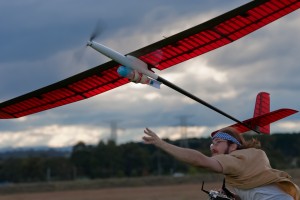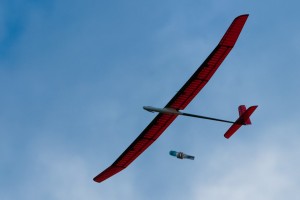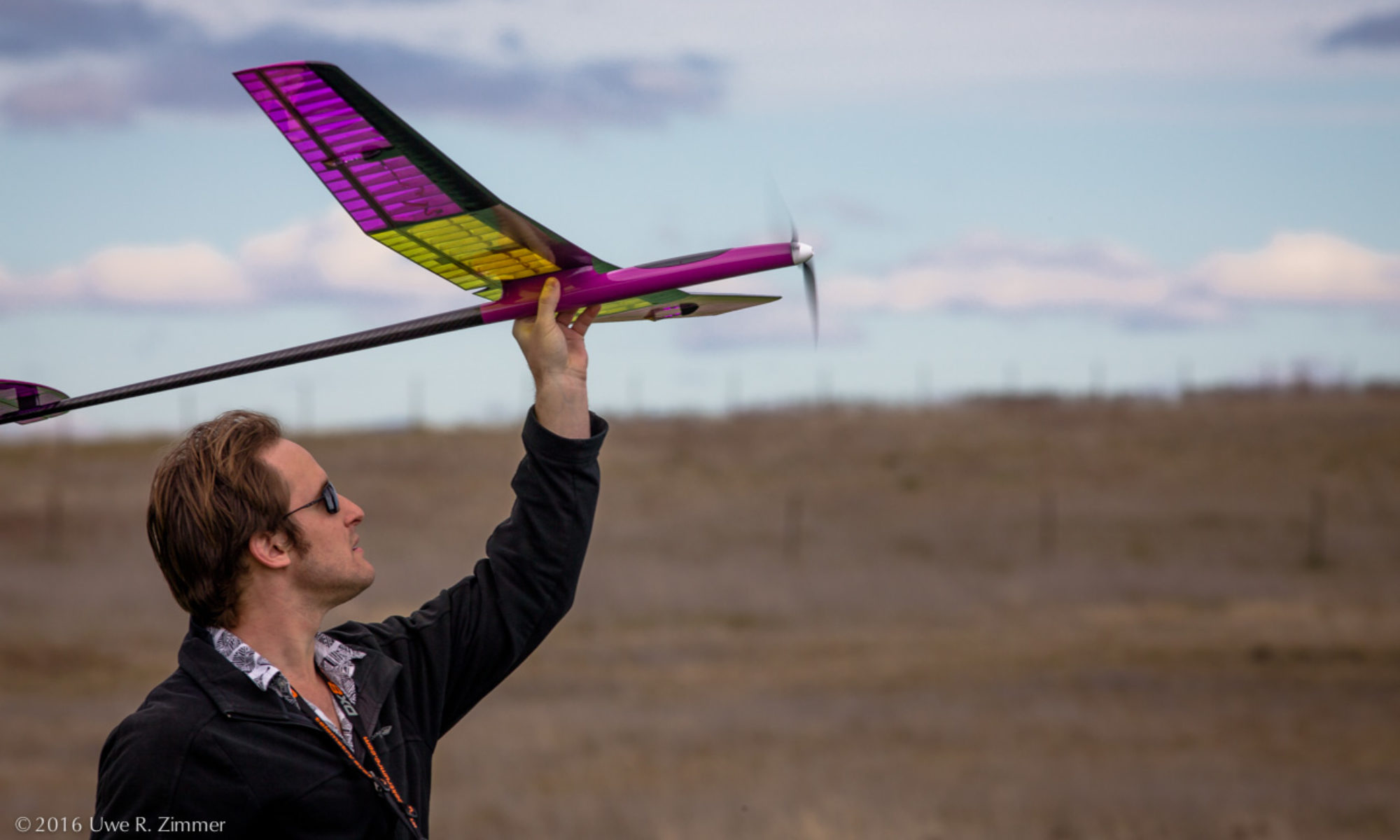With the second deliverable for the Outback Challenge quickly approaching it was about time I discovered if the Pulsar could even carry the all important bottle of water.
After a successful maiden flight I took the Pulsar home and began hacking away at it with a rotary tool. The idea was to cut the holes I had planned in the fuselage so the bottle could be attached and the camera could see. This is pretty much what I achieved, albeit with a few more slips and scratches then I had hoped for.
With some minor cosmetic damage, but functionality otherwise perfect it was time to take it to the field. The conditions on Saturday were perfect with only a slight wind, no rain and some pretty spectacular looking clouds.
I took a short flight to test some changes I had made to the Pulsar’s controls as well as the epoxy I had just applied to fix a minor wound. The exponential setting on the elevator made a world of difference and the Pulsar is now a dream to fly. Once I was comfy, I landed and attached the water bottle.
 The payload is not my proudest moment in terms of design. I just took a 500mL soft-drink bottle, stuck some fins on it and taped some bubble wrap to the front. It’s not pretty, and I don’t expect it to survive the drop. I’ll worry about that if I make it as far as locating Joe.
The payload is not my proudest moment in terms of design. I just took a 500mL soft-drink bottle, stuck some fins on it and taped some bubble wrap to the front. It’s not pretty, and I don’t expect it to survive the drop. I’ll worry about that if I make it as far as locating Joe.
The bottle also has a plastic pylon strapped to it with some webbing which mates with the mechanism in the fuselage. This includes a servo with metal arms that locks the pylon in place until commanded to release it. Both parts were made from sintered plastic and my tests of the mechanism have been successful so far on the ground.
The Pulsar weighs about 2.3kg with all my gear installed, which is about what the designer had in mind. Adding another 500g also adds a number of concerns. Will it still be able to climb? or will it just crash into the runway on takeoff? If it does climb, will the wings stay attached or be ripped off the fuselage? And finally: if it flies with the bottle attached, what happens when it suddenly drops 18% of its total weight? There was really only one way to answer all these questions.
Launching the Pulsar with a bottle attached is awkward to say the least. Because it needs to be exactly below the center of gravity, it sits exactly where I want to hold it. The first launch was quite hairy as the Pulsar banked hard, directly towards my camera man. I quickly floored the throttle and was very happy to learn it had enough power to climb and clear my camera man by a significant margin.
It actually managed to climb quite well with the bottle attached. It couldn’t quite go vertical as it does without the weight but it still manages to climb quite quickly and steeply. It certainly didn’t fly as easily with all the extra weight, but it still managed to fly effectively. It could still glide and could get up a lot of speed.
 With the Pulsar & bottle in the air and with the wings still attached, it was time for the moment of truth. I counted down to give my camera men warning and flicked the switch to drop the bottle. It separated cleanly and fell away without interfering and to my surprise the aircraft barely twitched.
With the Pulsar & bottle in the air and with the wings still attached, it was time for the moment of truth. I counted down to give my camera men warning and flicked the switch to drop the bottle. It separated cleanly and fell away without interfering and to my surprise the aircraft barely twitched.
After landing, the bottle was recovered and despite some damage to the fins it still contained all the precious water and had no cracks or leaks to speak of. We completed two drops of the bottle without incident and the bottle itself remains intact.
A very successful day indeed and given the deadline for the next deliverable was extended two weeks, I’m still on track to receive a ‘go’ from the organisers. One objective was also to gather enough footage to prove everything I said above. Thanks to Jan & Uwe I have a bunch which I’ve attempted to cut together into a short film for you all. Enjoy!
embedded by Embedded Video
YouTube Direkt

